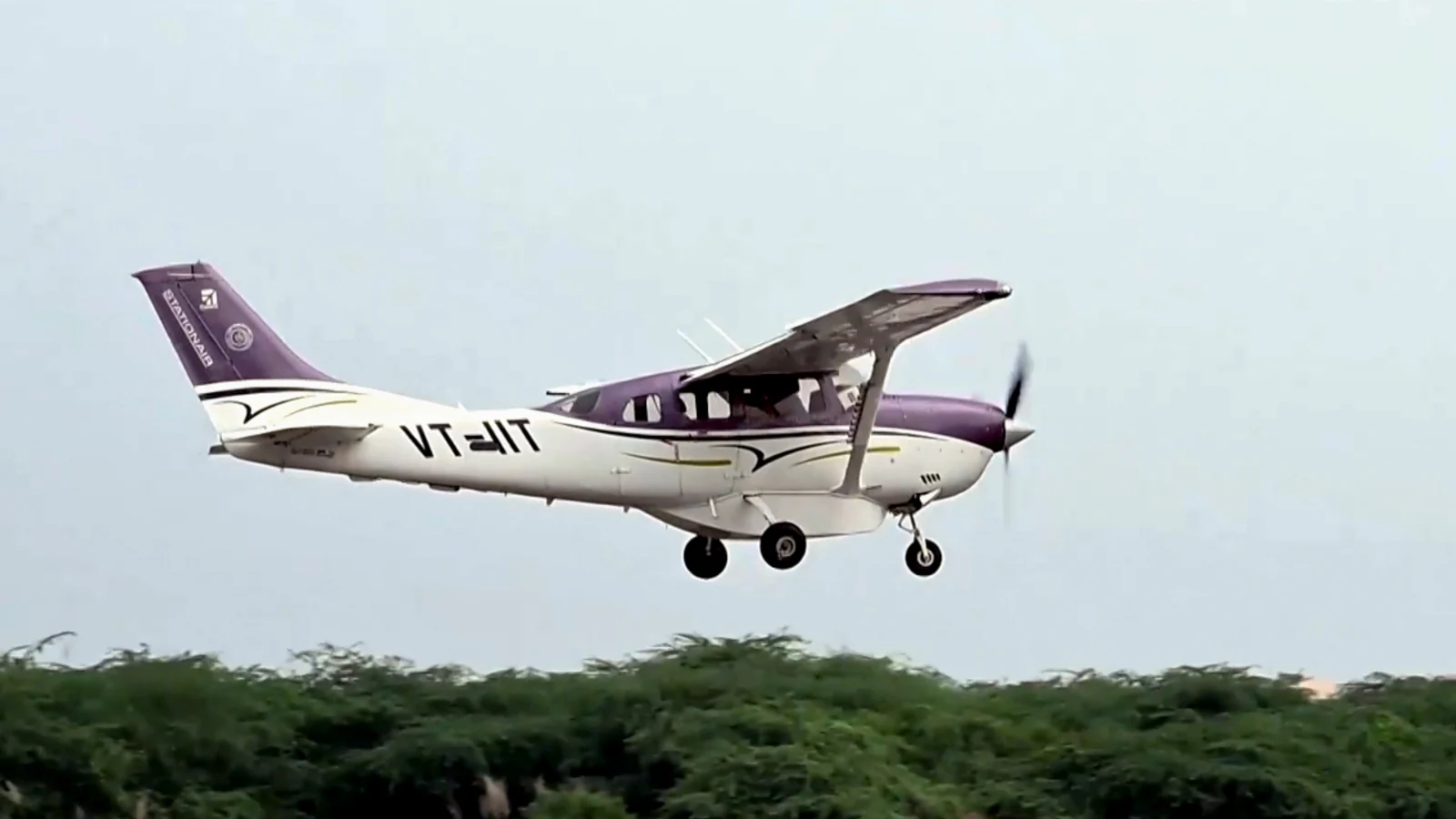Copyright news18

Delhi inched closer to witnessing its first-ever artificial rainfall on Friday as scientists from Indian Institute of Technology (IIT), Kanpur successfully executed a two-phase cloud seeding operation over the northern skies of the capital. The mission, carried out over a 25-nautical-mile corridor between Khekra and Burari, is part of a first-of-its-kind experiment to bring respite to residents choking under post-Diwali pollution. The exercise marked a significant milestone in India’s scientific efforts to use weather modification technology for air quality management. According to Professor Manindra Agrawal, Director, IIT Kanpur, and lead scientist on the project, the seeding flights were conducted with precision and according to plan. “With both the seedings successfully completed, we now have to wait till late evening to see if it rains,” he said. Morning trial from Kanpur before Delhi mission The day began with a trial flight from IIT Kanpur’s airstrip, coordinated at the request of Chakeri Air Traffic Control (ATC). The objective was to assess flying conditions, cloud base, and atmospheric visibility before the main seeding operation over Delhi. “We wanted to evaluate the cloud patterns and wind stability for the route clearance. The aircraft flew around 6,000 feet across Kanpur, Gwalior, Meerut, and Hindon sectors to assist ATC in coordinating necessary permissions,” said Professor Soumya Ranjan Sahoo, who has been authorised by IIT Kanpur to brief the media. After returning to the institute’s airbase, the team reported that visibility above 5,000 feet was poor, while conditions around 3,000 feet were optimal for safe flying. “Hence, the final flight plan was filed for 3,000 feet initially, and by the time they reached Delhi, the crew had clearance to climb to 6,000 feet to execute the mission,” Professor Sahoo explained. Two-phase cloud seeding executed over Delhi skies The operation began shortly after noon when the first aircraft departed from Kanpur and reached Delhi airspace. The target zone, stretching from Khekra in western Uttar Pradesh to the northern edge of Burari in Delhi, was identified as having small but moisture-bearing cloud patches. During the first round, the team fired six silver-iodide-based flares at an altitude of about 4,000 feet above ground level, each burning for nearly 18.5 minutes. The flares were designed to disperse fine particles of silver iodide and sodium chloride, which act as condensation nuclei to trigger rain droplets if sufficient moisture exists. A second flight followed at 3:55 pm, deploying eight additional flares at higher altitudes between 5,000 and 6,000 feet, thereby covering the upper cloud layers over north Delhi and parts of western Uttar Pradesh. Professor Agrawal said the team is closely monitoring satellite and meteorological data through the India Meteorological Department (IMD) and the Windy professional system to track developments. “The moisture levels looked favourable earlier in the day, but we will know by tonight whether the seeded clouds have yielded precipitation,” he said. Aiming to bring AQI below 100 The mission’s ultimate goal is to clean Delhi’s toxic post-Diwali air, which has been fluctuating between the ‘poor’ and ‘severe’ categories in recent days. According to the Central Pollution Control Board (CPCB), Delhi’s overall AQI stood at 293 on Friday morning — an improvement from the ‘severe’ 400+ range earlier this week, but still hazardous for prolonged exposure. “If all goes as we expect and there’s adequate moisture, the rain could bring the AQI below 100,” Professor Agrawal told News18 earlier. “It would mean a transition from highly polluted to breathable air — a dramatic improvement in a matter of hours.” He added that the success of this operation depends heavily on atmospheric moisture, wind velocity, and temperature gradients — factors that determine how effectively the seeded particles interact within clouds. The artificial rain project is being conducted jointly by IIT Kanpur, the India Meteorological Department (IMD), and the Indian Institute of Science (IISc), under the aegis of the Delhi government. Officials said the operation’s success could mark a historic scientific intervention against Delhi’s recurring winter pollution crisis. The science behind it Cloud seeding works by dispersing microscopic particles into clouds that encourage water droplets to form and grow heavy enough to fall as rain. The technique, first developed in the 1940s, has been used globally in China, the UAE, and the US — often for drought management. However, Delhi’s experiment is unique, aimed not at boosting rainfall for agriculture but at cleansing urban air. “Rain is nature’s best air purifier. We’re simply trying to accelerate that process through controlled, scientific means,” Professor Agrawal said. Waiting for the sky to answer As evening approaches, all eyes are on Delhi’s skies to see if the flares will bring rain. The operation’s success could not only wash away the current smog blanket but also serve as a template for other polluted Indian cities like Kanpur, Lucknow, Patna, and Ghaziabad. As of now, the IIT Kanpur team waits — instruments ready, data streaming in, and anticipation building. “We’ve done everything within our control — scientifically, logistically, and technically. Now it’s up to the clouds,” Professor Agrawal said.



